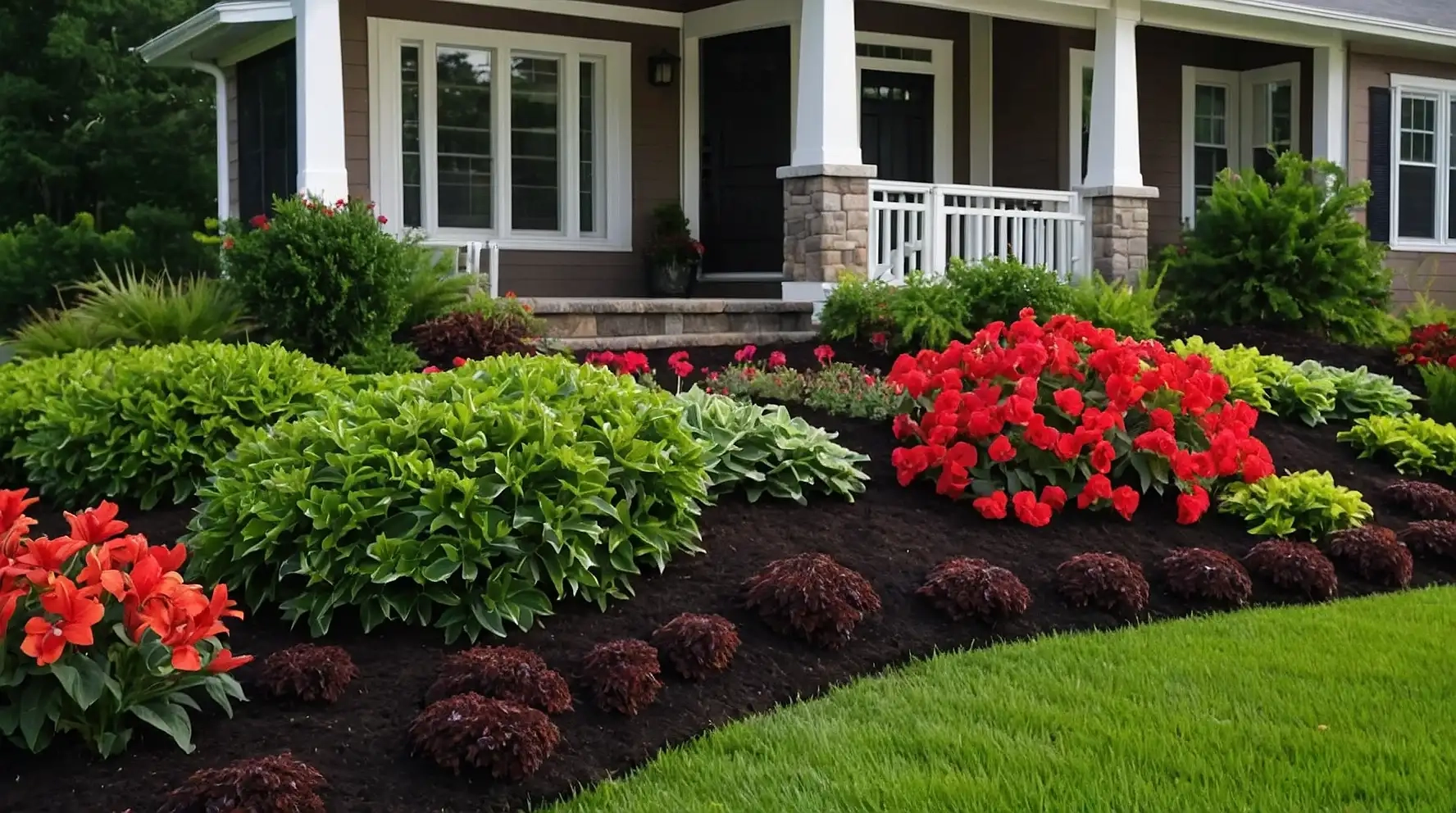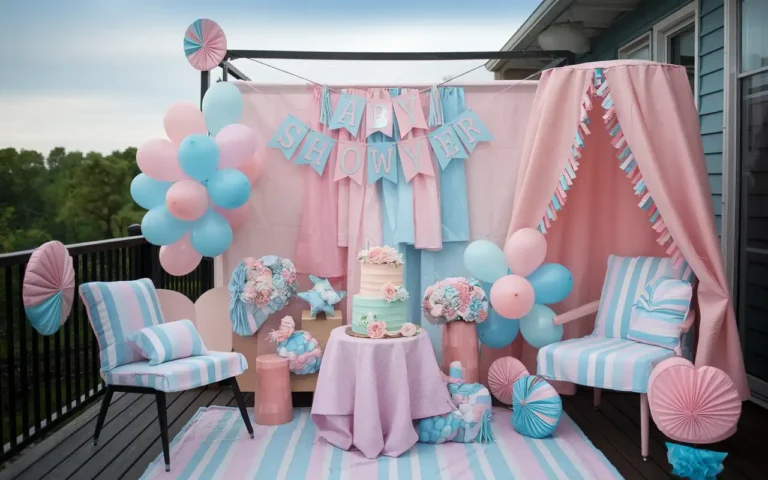27 Stunning Front Flower Bed Ideas to Transform Your Curb Appeal
Your front yard creates the first impression of your home, and a well-designed flower bed can instantly elevate your curb appeal.
Whether you have a sprawling front yard or a modest entryway, these creative flower bed ideas will help you maximize your outdoor space.
From low-maintenance designs to statement installations, you’ll find inspiration for every style and budget.
1: Layer Plants by Height

Create depth in your flower bed by positioning taller plants at the back and shorter ones in front.
This tiered approach ensures all your beautiful blooms remain visible from the street.
Try ornamental grasses or small shrubs as a backdrop with mid-height perennials in the middle and colorful annuals along the border.
2: Frame Your Walkway

Guide visitors to your front door with flower beds that line your walkway.
This creates a welcoming path that draws the eye toward your home’s entrance.
Choose compact plants like lavender, boxwood, or dwarf hydrangeas for structure, then fill in with seasonal color that complements your home’s exterior.
3: Incorporate Edging Materials

Define your flower beds with distinctive edging that creates clean lines and prevents grass from invading your plants.
Try classic brick for traditional homes, natural stone for rustic appeal, or modern metal edging for contemporary designs.
Good edging not only looks polished but also simplifies maintenance.
4: Create a Cottage Garden Look

Embrace the charming, slightly wild aesthetic of cottage gardens with a mix of flowering perennials, herbs, and roses planted closely together.
Allow plants to spill slightly over walkways for that authentic, lived-in feel.
Choose varieties like foxglove, hollyhocks, and daisies in a palette that feels cohesive yet natural.
5: Design a Drought-Tolerant Display

Conserve water with a xeriscaped flower bed featuring succulents, ornamental grasses, and native plants adapted to your region.
These low-maintenance options require minimal watering once established.
Add decorative rocks and gravel between plantings for texture and to reduce water evaporation from the soil.
6: Highlight Your Home’s Architecture

Design flower beds that accentuate your home’s best architectural features.
Frame bay windows, highlight entryways, or soften corners with thoughtfully placed plantings.
Choose colors and textures that complement your home’s color scheme and style for a cohesive look that feels professionally designed.
7: Install Raised Flower Beds

Elevate your plantings with raised beds that add dimension and make your front yard more accessible for gardening.
Build them from stone, wood, or concrete blocks to match your home’s style.
Raised beds provide better drainage and soil control while creating a clear boundary for your garden space.
8: Plant a Seasonal Color Rotation

Plan your flower beds to showcase different blooms throughout the year.
This ensures continuous visual interest even as seasons change.
Start with spring bulbs like tulips and daffodils, transition to summer perennials, add fall mums and asters, then finish with winter-interest plants like hellebores and evergreens.
9: Incorporate Ornamental Trees

Add vertical interest to your front yard with small ornamental trees as focal points in your flower beds.
Varieties like Japanese maple, dwarf magnolia, or flowering dogwood create instant impact.
Plant smaller flowers and ground covers around the base to create a cohesive design that draws the eye upward.
10: Mix in Ornamental Grasses

Introduce movement and texture with ornamental grasses that sway in the breeze.
Varieties like feather reed grass, blue fescue, or switchgrass add visual interest year-round.
These low-maintenance plants look particularly stunning when backlit by morning or evening sunlight and provide winter interest when other plants have faded.
11: Create a Butterfly Garden

Transform your front flower bed into a pollinator paradise with plants that attract butterflies, bees, and hummingbirds.
Choose nectar-rich varieties like coneflower, butterfly bush, and bee balm.
This eco-friendly approach adds dynamic movement to your garden while supporting local wildlife and creating a conversation starter for visitors.
12: Design a Moon Garden

Illuminate your evening landscape with white and silver-foliaged plants that reflect moonlight and create a magical nighttime display.
Choose fragrant evening bloomers like jasmine or night-blooming cereus alongside silvery artemisia or lamb’s ear for a front yard that remains enchanting after sunset.
13: Integrate Water Features

Add the soothing sound of water to your front yard with a small fountain or bubbler incorporated into your flower bed.
Surround it with moisture-loving plants like Japanese iris, astilbe, or water-loving ferns.
This creates a multi-sensory experience that makes your front yard feel like a tranquil retreat.
14: Go Monochromatic

Create a sophisticated, designer look by limiting your flower bed to variations of a single color.
A purple-themed garden might include lavender, salvia, allium, and verbena in different shades.
This approach creates visual cohesion while still offering textural variety and appears more intentional than random color combinations.
15: Plant a Fragrance Garden

Delight the senses with fragrant plants positioned near your front door or windows where their scent can be enjoyed.
Incorporate aromatic varieties like roses, lilac, jasmine, or herbs such as rosemary and lavender.
The combination creates an immersive experience that engages visitors before they even reach your door.
16: Use Tropical Plants for Drama

Make a bold statement with tropical plants that create an exotic oasis, even in temperate climates.
Large-leafed plants like cannas, elephant ears, and banana plants create dramatic impact.
Treat them as annuals in colder regions or plan to bring them indoors during winter months.
17: Create a Rock Garden

Transform challenging slopes or areas with poor soil into stunning rock gardens featuring drought-tolerant alpine plants and succulents.
Arrange boulders and stones of varying sizes to create natural-looking outcroppings, then plant hardy varieties like sedum, sempervivum, and creeping thyme in the crevices.
18: Design a Formal Symmetrical Layout

Embrace classical design principles with symmetrical flower beds that create a sense of order and elegance. Mirror plantings on either side of your walkway or entrance.
This approach works particularly well with traditional home styles and can incorporate shaped shrubs, boxwood hedges, and orderly rows of seasonal color.
19: Add Garden Art Accents

Incorporate decorative elements like garden sculptures, ornamental stakes, or artistic trellises that add personality to your flower beds.
Choose pieces that reflect your personal style while complementing your home’s architecture.
These elements add winter interest and create focal points that draw the eye through your garden design.
20: Establish a Native Plant Garden

Support local ecosystems by featuring native plants adapted to your specific region. These plants typically require less water and maintenance once established.
Research which flowers, grasses, and shrubs naturally thrive in your area for a sustainable landscape that connects your home to its natural surroundings.
21: Create a Four-Season Framework

Build flower beds with a strong backbone of evergreen shrubs and structural plants that maintain visual interest throughout the year.
Fill in between these anchor plants with seasonal bloomers for color.
This approach ensures your front yard never looks bare, even during dormant winter months.
22: Install Smart Lighting

Extend the enjoyment of your front flower beds into evening hours with strategic landscape lighting.
Solar path lights, up lighting on specimen plants, or string lights in trees create ambiance.
This practical addition improves safety while highlighting your garden’s best features after dark.
23: Plant a Cutting Garden

Grow your favorite flowers for both outdoor enjoyment and indoor arrangements. Choose varieties known for their vase life like zinnias, dahlias, and cosmos.
Position this flower bed where you can easily access it for harvesting without creating obvious gaps in your landscaping visible from the street.
24: Incorporate Fruit-Bearing Plants

Add edible elements to your front yard landscape with attractive fruit-bearing plants like blueberry bushes, strawberries as ground cover, or dwarf fruit trees.
Many varieties offer beautiful blossoms, colorful fruit, and fall foliage for year-round visual interest while providing a harvest of fresh produce.
25: Design with Repetition

Create a professional-looking landscape by repeating certain plants or colors throughout your front yard flower beds.
This technique, called “rhythmic planting,” guides the eye through your garden.
Try groups of three or five of the same plant spaced throughout your design for cohesion without monotony.
26: Add Height with Trellises

Maximize vertical space by incorporating trellises, arbors, or obelisks into your flower beds.
These structures support climbing plants like clematis, morning glories, or climbing roses.
Vertical elements add dimension to your garden while framing views and creating the illusion of more space in smaller yards.
27: Create a Meditation Garden

Design a tranquil front yard retreat with a contemplative atmosphere.
Include a comfortable bench positioned to enjoy your plantings, along with soothing elements like wind chimes or a small water feature.
Choose plants known for their calming properties like lavender, chamomile, and catnip for a garden that engages all the senses.
Conclusion
Your front flower bed serves as your home’s welcome mat.
By implementing these ideas, you’ll create an inviting landscape that expresses your personality while boosting your property’s curb appeal and value.







